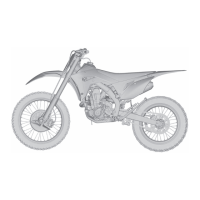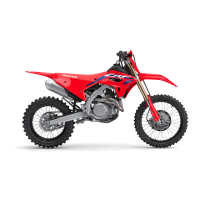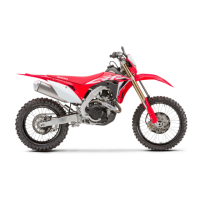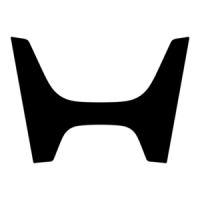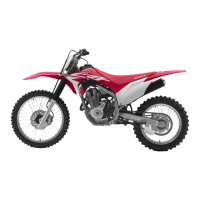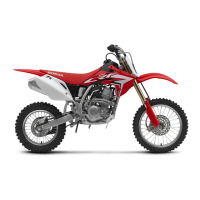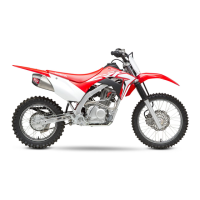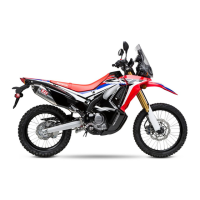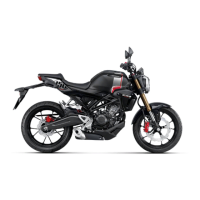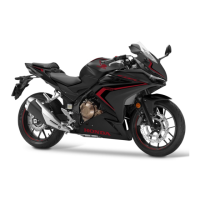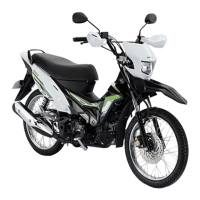Tires & Tubes
Servicing Your Honda 119
Tires & Tubes
Refer to Important Safety Precautions on page 23.
To safely operate your CRF, the tires must be the
proper type (off-road) and size, in good condition
with adequate tread, and correctly inflated.
The following pages give detailed information on
how and when to check your air pressure, how to
inspect your tires for wear and damage, and our
recommendations on tire repair and replacement.
Properly inflated tires provide the best
combination of handling, tread life, and riding
comfort. Generally, underinflated tires wear
unevenly, adversely affect handling, and are more
likely to fail from being overheated.
Underinflated tires can also cause wheel damage
on hard terrain. Overinflated tires make your CRF
ride harshly, are more prone to damage from
surface hazards, and wear unevenly.
Make sure the valve stem caps are secure. If
necessary, install new caps.
Always check air pressure when your tires are
“cold.” If you check air pressure when your tires
are “warm” — even if your CRF has only been
ridden for a few miles — the readings will be
higher. If you let air out of warm tires to match the
recommended cold pressures, the tires will be
underinflated.
The correct “cold” tire pressures are:
If you decide to adjust tire pressures for a
particular riding condition, make changes a little at
a time.
Take time to inspect your tires and wheels before
you ride.
• Inspect carefully for bumps or bulges in the
side of the tire or the tread. Replace any tire
that has a bump or bulge.
• Look closely for cuts, slits, or cracks in the
tires. Replace a tire if you can see fabric or
cord.
• Check for rocks or other objects embedded in
the tire or tread. Remove any objects.
• Check the position of both valve stems. A
tilted valve stem indicates the tube is slipping
inside the tire or the tire is slipping on the rim.
If a tube is punctured or damaged, you should
replace it as soon as possible. A repaired tube may
not have the same reliability as a new one, and it
may fail while you are riding.
Use a replacement tube equivalent to the original.
Using tires that are excessively worn or
improperly inflated can cause a crash in
which you can be seriously hurt or killed.
Follow all instructions in this owner’s
manual regarding tire inflation and
maintenance.
Air Pressure
Front 15 psi (100 kPa, 1.0 kgf/cm
2
)
Rear 15 psi (100 kPa, 1.0 kgf/cm
2
)
Inspection
Tube Replacement
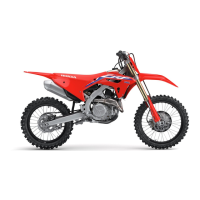
